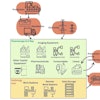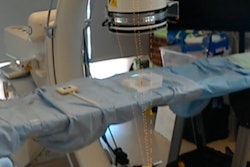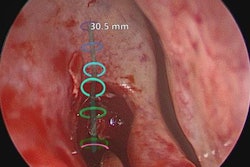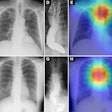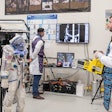Dear Digital X-Ray Insider,
While some consider x-ray to be one of the more staid imaging modalities, radiography has seen its share of controversy over the past few years. The latest imbroglio is centered on Kentucky, where x-ray has become a political football in a struggle between coal miners and mining companies over a federal program to perform black lung screening exams.
The initiative at issue is known colloquially as the B-reader program, and it was established decades ago to detect early signs of black lung in coal miners by certifying physicians who were deemed competent to interpret chest x-ray exams. Miners found to have black lung could then become eligible for disability and workers' compensation funds.
Sounds innocuous, right? Not so fast. Mining companies and unions have dueled over the B-reader certifications, with coal companies charging that interpretations from radiologists are too friendly to miners and their attorneys, while unions accuse pulmonologists of favoring the companies.
The other shoe dropped in March, when the mining companies were able to push a law through the Kentucky Legislature that barred radiologists from the B-reader program. The move was seen as an attempt to reduce the number of claims for black lung, even though there has been a resurgence in cases in eastern Kentucky.
But the story doesn't end there. As we were going to press, word came of a bill backed by miners that was introduced in the West Virginia Legislature to create a state black lung program that would be more generous to those with the disease. Get the rest of the story by clicking here.
Meanwhile, other news continues to percolate in digital x-ray:
- Researchers in China tested the ability of digital tomosynthesis with a metal artifact reduction algorithm to determine how well cementless hip implants were integrated with bone. They found that the technique worked better than either CT or conventional radiography: Get the details in our Insider Exclusive.
- A group from Johns Hopkins University used an augmented reality technique to better guide the placement of surgical nails under C-arm guidance.
- An artificial intelligence algorithm developed by a group from Google performed well in identifying and localizing disease on chest x-ray images.
- The use of skeletal radiography has grown at a modest rate in the U.S. over the past 12 years, but the growth hasn't been evenly distributed between radiologists and nonradiologists. Learn more by clicking here.
- A group from Seattle shared a fascinating case of a woman with mental disorders who swallowed pieces of a fidget spinner.
- A recent survey found that computed radiography is still prevalent in U.S. imaging facilities, despite a federal law passed in 2016 designed to push sites to digital radiography.
Get these stories and more in your Digital X-Ray Community. And drop me a line if you have any news or tips to share.



